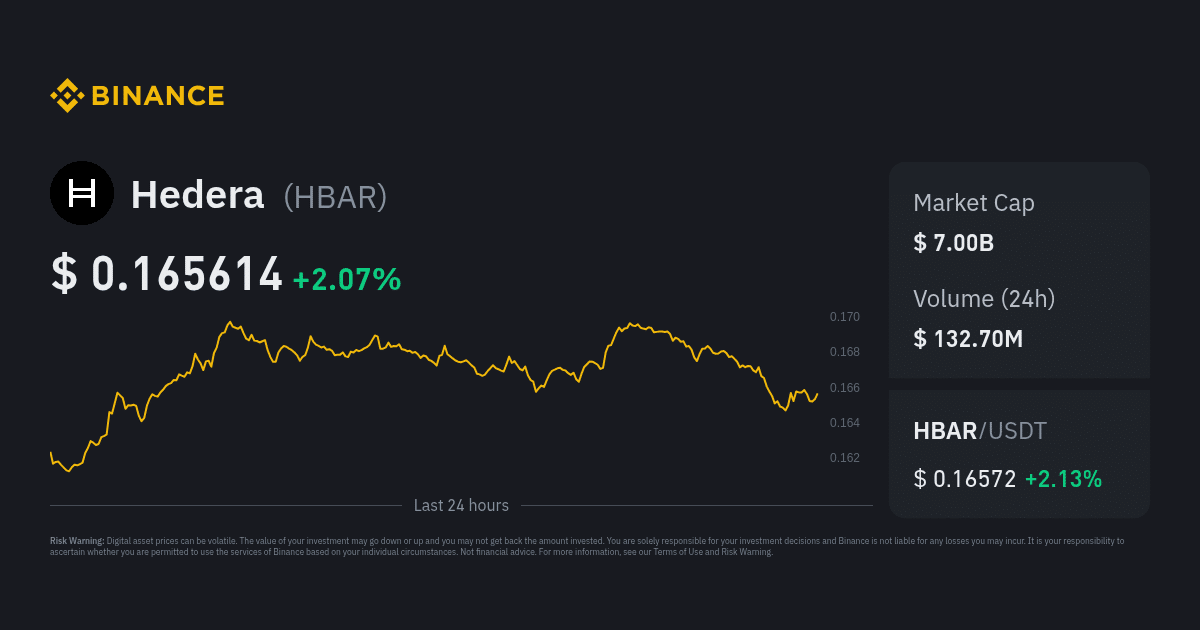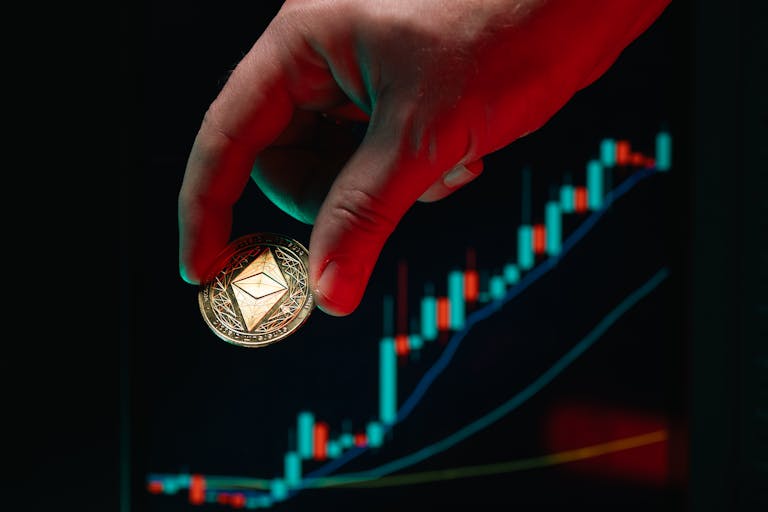Binance and Hedera (HBAR) Tokenization Updates: A New Era for Digital Asset Innovation
In the rapidly evolving world of blockchain and decentralized finance (DeFi), tokenization—the process of converting real-world assets into digital tokens on a blockchain—has emerged as a transformative force. This innovation enables fractional ownership, increased liquidity, and seamless cross-border transactions. Recently, Binance, the world’s leading cryptocurrency exchange, has been making strides in integrating tokenization capabilities, particularly within the Hedera (HBAR) ecosystem. These updates are positioning Hedera as a key player in the tokenization space, leveraging its unique consensus technology and Binance’s expansive platform to unlock new opportunities for users and developers alike.
Understanding Tokenization and Its Significance
Tokenization refers to the digitization of physical or traditional assets (e.g., real estate, stocks, art, commodities) into programmable tokens on a blockchain. This process democratizes access to assets, reduces intermediaries, and enhances transparency. For instance, a $1 million property could be tokenized into 1,000 HBAR-based tokens, each representing $1,000 of value, allowing investors to buy, sell, or trade fractional shares easily.
The rise of tokenization has been fueled by the need for more efficient financial systems, particularly in sectors plagued by inefficiencies, high costs, or limited accessibility. By bridging the gap between traditional finance and Web3, tokenization is set to revolutionize how value is stored, transferred, and utilized.
Hedera: A High-Performance Blockchain for Tokenization
Hedera Hashgraph, the native blockchain of the HBAR token, stands out for its asynchronous Byzantine Fault Tolerance (aBFT) consensus algorithm, which provides unparalleled speed, security, and fairness. Unlike traditional blockchain networks that rely on proof-of-work or proof-of-stake, Hedera’s hashgraph mechanism uses a virtual voting system to achieve consensus, enabling it to process over 10,000 transactions per second with sub-second finality.
Key features that make Hedera ideal for tokenization include:
- Low transaction fees (typically under $0.0001 per transaction).
- High scalability and throughput for large-scale asset digitization.
- Environmental sustainability due to its energy-efficient consensus model.
- Strong governance and compliance via its multi-party consensus framework, which is particularly appealing for regulated assets.
These attributes have made Hedera a preferred choice for enterprises and developers seeking to tokenize assets securely and efficiently.
Binance’s Role in the Tokenization Ecosystem
Binance, with its vast user base and extensive DeFi infrastructure, has been a driving force in adopting and expanding blockchain technologies. The exchange has long supported tokenization through its partnerships with various blockchain protocols, offering tools like Binance Smart Chain (BSC) and Binance USD (BUSD) to facilitate digital asset creation.
In 2023, Binance further cemented its commitment to tokenization by launching Binance Tokenize, a platform that allows users to issue their own tokens, including stablecoins and asset-backed tokens. This initiative aligns with Binance’s goal of enabling seamless asset representation on-chain while maintaining regulatory compliance.
Recent Updates: Binance and Hedera Collaborate on Tokenization
While specific details of Binance’s tokenization updates for Hedera (HBAR) may vary, recent collaborations and developments highlight a growing synergy between the two entities. Here are some key updates:
-
Cross-Chain Tokenization Integration
Binance has reportedly enhanced its infrastructure to support the integration of Hedera-based tokens (HBAR) with its broader ecosystem. This allows users to tokenize assets on Hedera and bridge them to Binance’s platforms, increasing interoperability. For example, tokenized real estate or corporate bonds issued on Hedera could be staked or traded on Binance, expanding their utility and reach. -
Enhanced Staking and Yield Opportunities
Hedera’s native token, HBAR, is now being utilized in Binance’s staking programs to offer yield-generating opportunities. By staking HBAR on Binance, users can earn rewards while contributing to the security and governance of Hedera’s network. This development underscores HBAR’s role as a critical asset in decentralized finance. -
Tokenization of Institutional Assets on Hedera
Binance has partnered with enterprises and startups to tokenize high-value assets on the Hedera blockchain. These initiatives often leverage HBAR as the base layer for transactions, ensuring low costs and high efficiency. For instance, Binance’s collaboration with asset managers could enable the tokenization of stocks or commodities, which are then listed on its platform for trading. - Compliance and Regulatory Tools
Hedera’s decentralized governance and compliance-focused design, backed by its consortium of major corporations, make it attractive for regulated tokenization. Binance has integrated tools to ensure these tokenized assets meet legal standards, such as KYC/AML processes, enabling compliance with global financial regulations.
Key Benefits of Binance and Hedera’s Tokenization Synergy
- Fractional Ownership and Accessibility: Investors can access traditionally illiquid assets through tokens, democratizing wealth.
- Cost Efficiency: Hedera’s low fees and Binance’s scalability reduce the costs of issuing and trading tokenized assets.
- Speed and Security: Transactions on Hedera are processed in seconds, while Binance’s infrastructure ensures robust security and user-friendly interfaces.
- Interoperability: Bridging HBAR-based tokens with Binance’s platforms opens new markets for developers and enterprises.
Challenges and Considerations
While the partnership is promising, challenges remain:
- Regulatory Hurdles: Tokenizing real-world assets often requires navigating complex legal frameworks.
- Adoption Rates: Widespread use of tokenized assets depends on user education and trust in decentralized systems.
- Technical Complexity: Integrating tokenization across chains demands advanced infrastructure and developer support.
Hedera and Binance are addressing these through partnerships with legal experts, ongoing developer tooling improvements, and user-centric platforms.
Future Outlook and Implications
The collaboration between Binance and Hedera signals a broader trend: the fusion of institutional-grade blockchain technology with the flexibility of DeFi. As more assets are tokenized, HBAR’s utility could grow exponentially, driven by demand for efficient, secure, and compliant digital assets.
Looking ahead, Binance may expand its tokenization offerings to include more HBAR-based assets, further solidifying Hedera’s position as a go-to platform for real-world asset digitization. This partnership could also attract traditional institutions to explore blockchain solutions for asset management, accelerating the shift toward a tokenized global economy.
Conclusion
Binance’s recent updates to support Hedera (HBAR) tokenization reflect a strategic move to blend the strengths of two leading platforms: Hedera’s speed and security, and Binance’s reach and infrastructure. As tokenization becomes a cornerstone of Web3, this collaboration is likely to drive innovation, offering users and enterprises new ways to leverage digital assets. For investors, HBAR’s role in this ecosystem could mean a surge in value and adoption, making it a token to watch during the next phase of blockchain evolution.
While the exact timeline and scope of these updates may vary, the combined power of Binance and Hedera is paving the way for a future where traditional and digital assets coexist seamlessly on the blockchain. As the space matures, the focus will remain on accessibility, compliance, and utility—areas where this partnership is well-positioned to lead.
Note: This article is based on information available up to July 2024. For the latest updates, please consult official announcements from Binance and Hedera.
Key Takeaways:
- Tokenization is reshaping traditional finance by digitizing real-world assets.
- Hedera’s hashgraph technology provides speed, security, and compliance.
- Binance’s integration with HBAR enhances interoperability and utility.
- The partnership aims to drive adoption of tokenized assets across sectors.
- Future growth depends on addressing regulatory and technical challenges.







